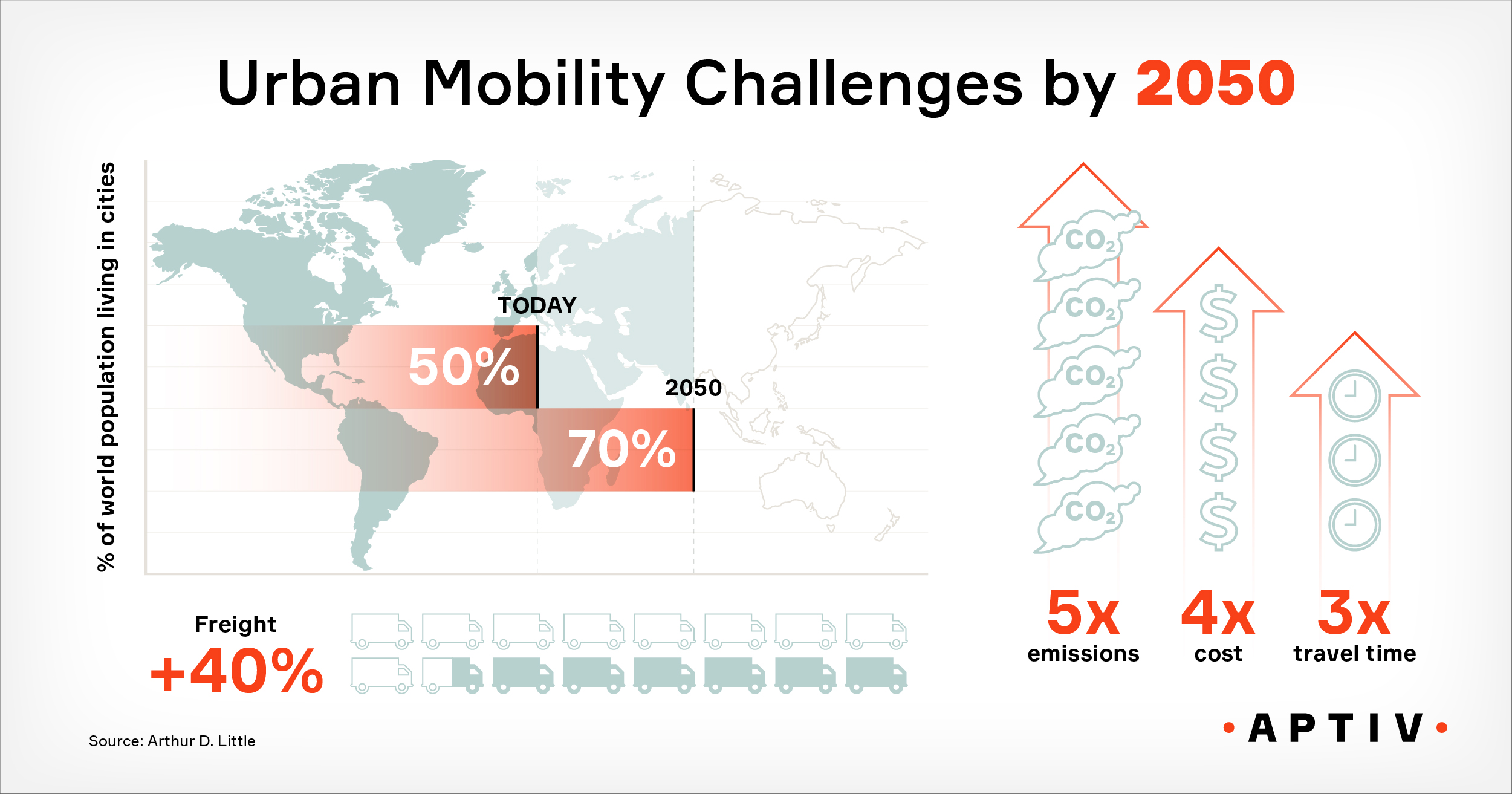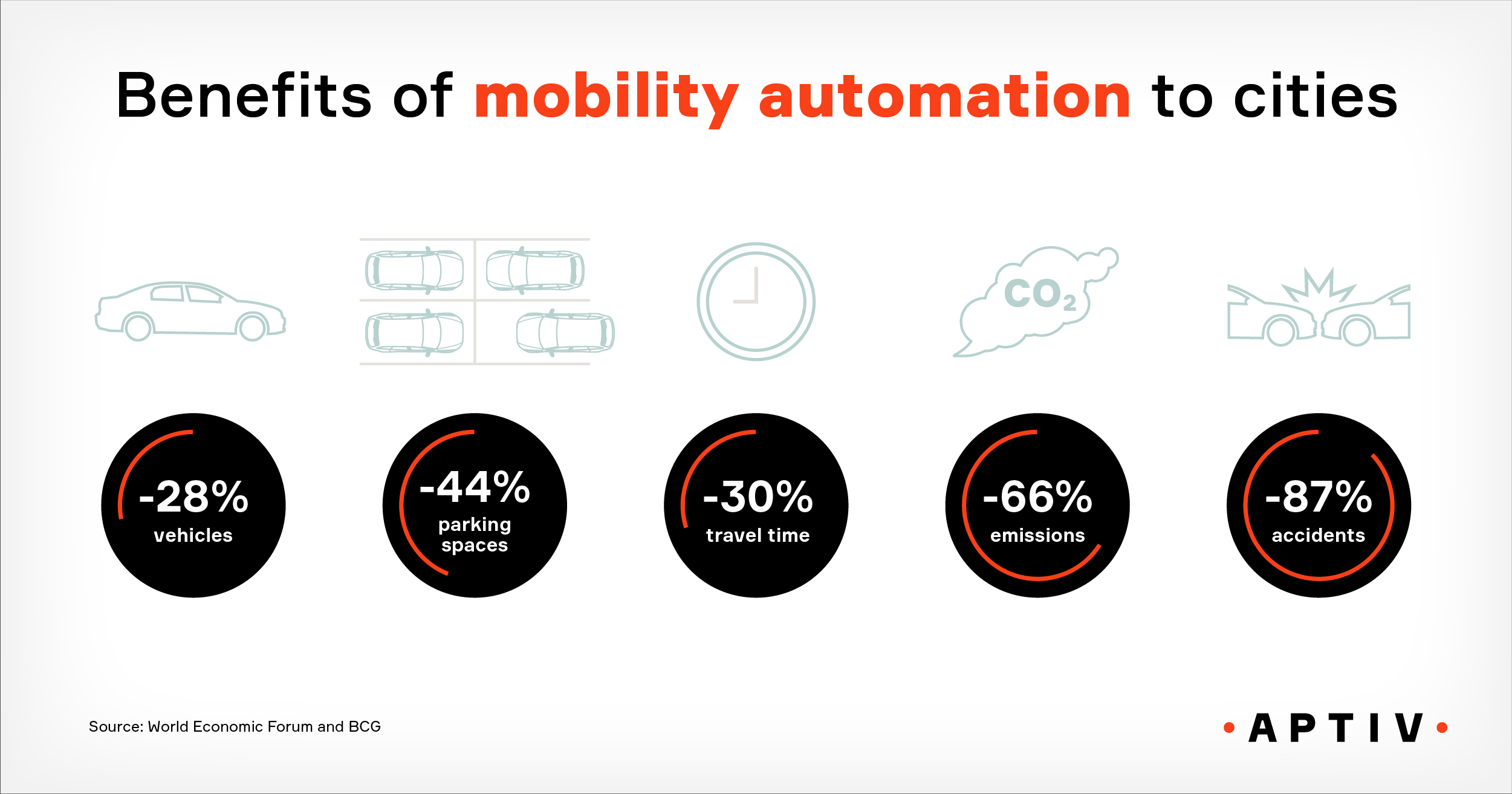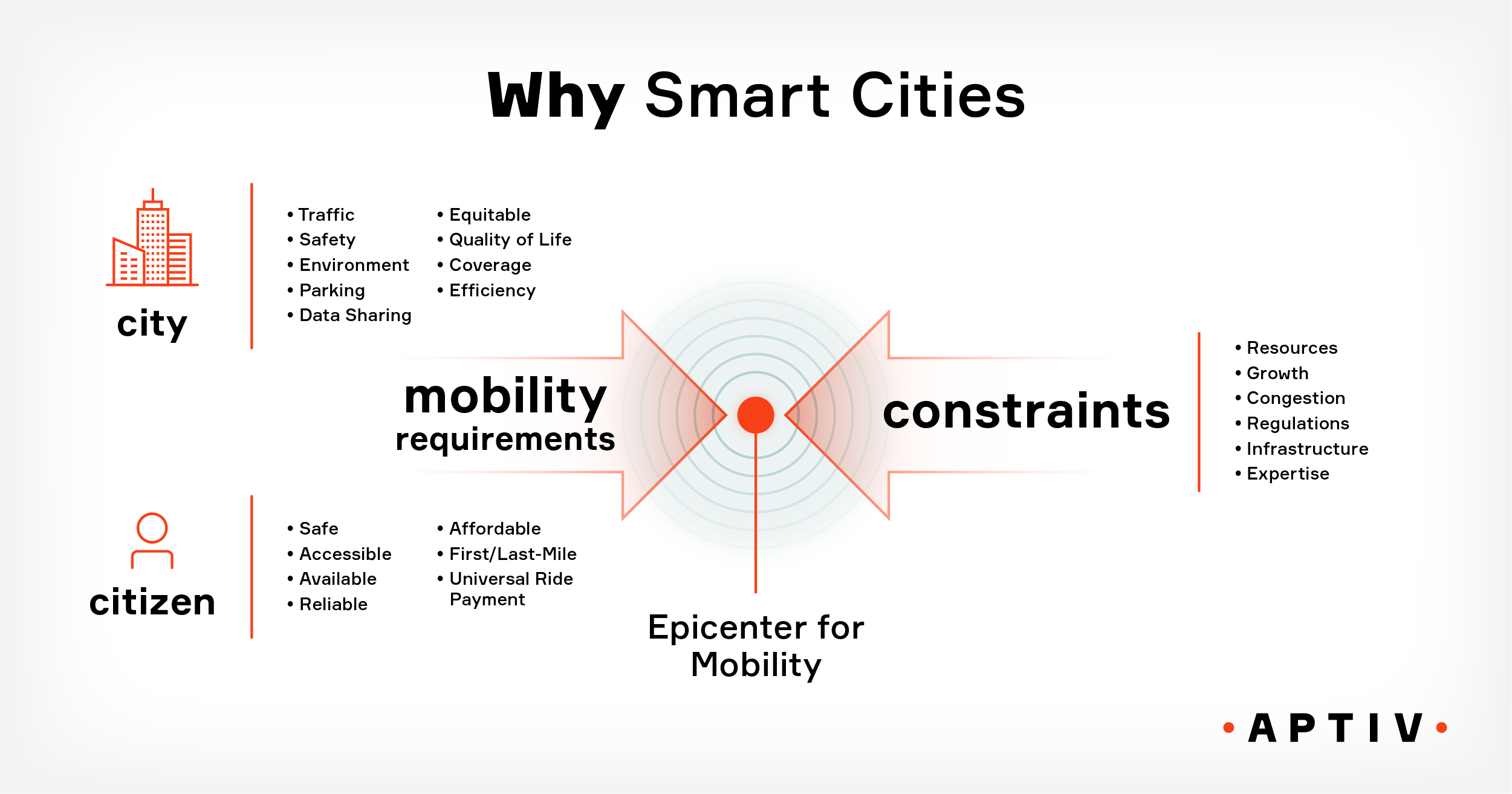MOBILITY NOW: How Autonomous Vehicles Can Help Pave the Way for Smarter Cities
Cities are becoming the epicenter for mobility innovation – and for good reason. Mobility is the lifeblood of any city. It enables the movement of people, goods, and thus ideas, social interactions, and resources. Mobility is what makes a city livable and an attractive place to live.
Cities today, however, face massive challenges in improving mobility. If you ask any city mayor, planner or transit official, he or she can reel off multiple challenges such as safety, congestion, environmental concerns, and equitable access for all. With urban populations projected to increase to 70 percent of the global population by 2050 (up from about 50 percent currently), these challenges will only continue to grow.
This increased population growth in cities means that by 2050, congestion and thus commute times could increase threefold, costs of transportation could increase fourfold, and emissions could rise to five times the current levels – if timely steps are not taken to address them.

Autonomous vehicle technology has the incredible potential to address most of these challenges. In fact, studies have shown that autonomous technologies can reduce urban travel time by 30 percent, bring down emissions by 66 percent, and lower the number of required parking spots by 44 percent.

The most striking and valuable impact autonomous vehicles can have in cities, however, is in the safety of its residents. Globally more than 1.5 million people die in traffic-related accidents annually and several times that are injured. In addition to the incalculable cost to human lives, this alarming statistic is also a significant drain on city health and emergency services. Autonomous technology has the potential to reduce traffic accidents by nearly 90 percent and is thus of significant value to cities. This is why progressive cities are planning for connected and autonomous vehicles by deploying upgrades including vehicle-to-infrastructure technologies and smart traffic signals, both of which can be helpful in enhancing road safety.
These are just a few of the reasons why Aptiv is so focused on working with cities to understand challenges, use cases, and how autonomous technology can integrate and work with city requirements. The cities that best handle these mobility challenges will provide a better quality of life, and thus attract more residents, capital, jobs, and opportunities. This is why it’s critical that cities realign themselves with a mobility focus.

At Aptiv, we are excited to be partnering on our connected and autonomous projects with some of the most forward-thinking cities in the world, including Singapore, Boston, and Las Vegas – and we look forward to enhancing the quality of life for citizens in these and other municipalities all over the world.




